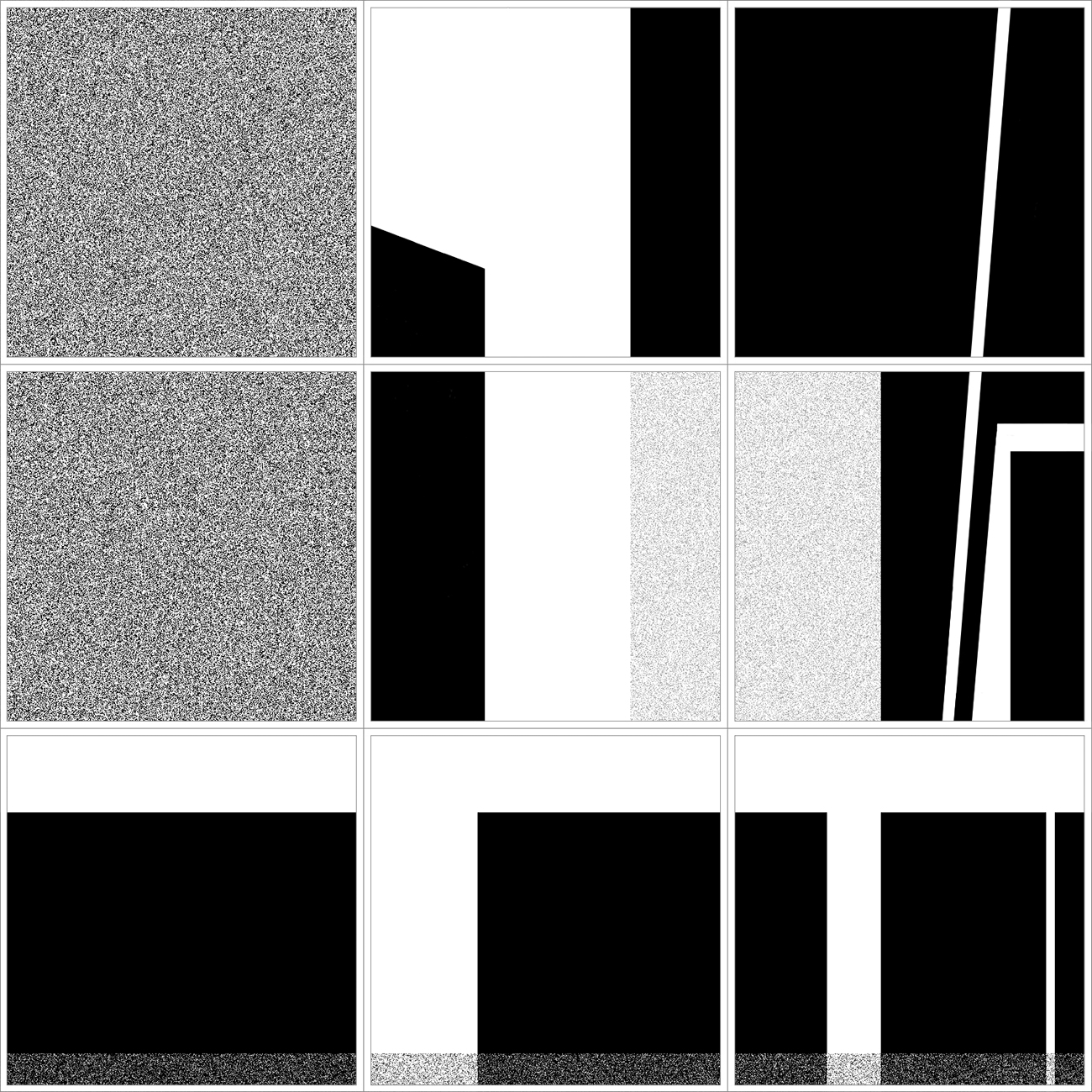Works of ARCHmetamorphizm project depict refraction of the author’s vision of architectural elements in a photograph.
Architectural sculpture transforms into fanciful forms as if small pieces of glass create a new geometrical reality after the turn of a kaleidoscope. Within such a transformation the original meaning of the utilised subjects are lost, they are no longer apartment or office buildings, or historical monuments, they become only the elements of a certain author’s vision, entering an aesthetic context.
Taking this path and losing its individuality, architectural elements become part of the author’s game with space, creating mosaics in which chaos takes arranged geometric patterns. Now the elements of objective reality are no longer perceived as such, and appear as either paintings of an outline of human chromosomes, as if accidentally compiled patterns in a media player, or as a virtual matrix reality when millions of numerals run along the screen at breakneck speed creating a new aesthetic reality.
Objects caught by the author are buildings from which architectural space is being built like a pattern of a new town planning scheme. All the photographs become parts of a construction set as they can be matched in any consequent modelling of a new landscape.
Coupling constants
Coupling constants are quantities characterizing the forces of interaction of particles or fields. The coupling constants determine the intensity of those transformations that are caused by elementary amplitudes. These constants are usually chosen dimensionless and are denoted by αe, αw, αs. The elementary amplitudes directly include the square roots of these quantities: (αe) 1/2 - into the elementary amplitude of the electromagnetic interaction; (αw) 1/2 - into the elementary amplitude of the weak interaction; (αs) 1/2 - into the elementary amplitude of the strong interaction.
The constant of electromagnetic interaction is the square of the electron’s electric charge, dimensionless with the help of the world constant ћc: αe = e2 / ћc = 1/137. Other constants do not have such a relationship with known physical quantities and are fundamentally new physical constants.
In the Standard Model, the values of the constants depend on the scale of the relative distances at which the interaction processes occur. The constants αe and αw in a wide energy range have values: αe = 1/137 = 0.0073, αw = 0.03-0.04.
The strong interaction constant αs in the range of distances ≈1 fm is of the order of unity. This feature of strong interaction has received the special name of the nonperturbative mode of strong interaction. With a decrease in relative distances, the strong interaction constant decreases noticeably. At distances of scale 0.1 and 0.001 fm, this constant has the following values, respectively
αs (0.1 fm) ≈ 0.31, αs (0.001 fm) ≈ 0.105.
The Fermi constant GF = 1.4 · 10-49 erg · cm3 is related to the weak interaction constant αw of charged currents by the following relation: where Mw is the mass of the W boson.
The constants of the electromagnetic and weak interactions αe, αw also depend on energy. The values of αs, αe, and αw at some energies are given in the table. Table. The values of the interaction constants αs, αe, at some energies
Energy, GeV αs αe αw, 0.01 10 1/137 1/26, 0.1 1 1/135 1/27, 1 0.40 1/133 1/28, 100 0.12 1/128 1/30
The decrease in αs with increasing energy is a consequence of the antiscreening of a strong (color) charge, leading to asymptotic freedom. Anti-screening also takes place for a weak charge and decreases αw with increasing energy. For αe, due to screening, there is an increase in the constant with energy. The strong interaction constant varies most strongly with energy.
The constants of the three fundamental interactions, which differ greatly at low energies, approach each other with increasing energy and, in the end, converge at energies of 1015-1016 GeV to almost the same value for all interactions
αGU ≈ 1/40.
This is the basis for the hope of creating a theory that combines strong, electromagnetic, and weak interactions. The concept of combining these three interactions is called the Grand Unification - Grand Unification (GU).






















